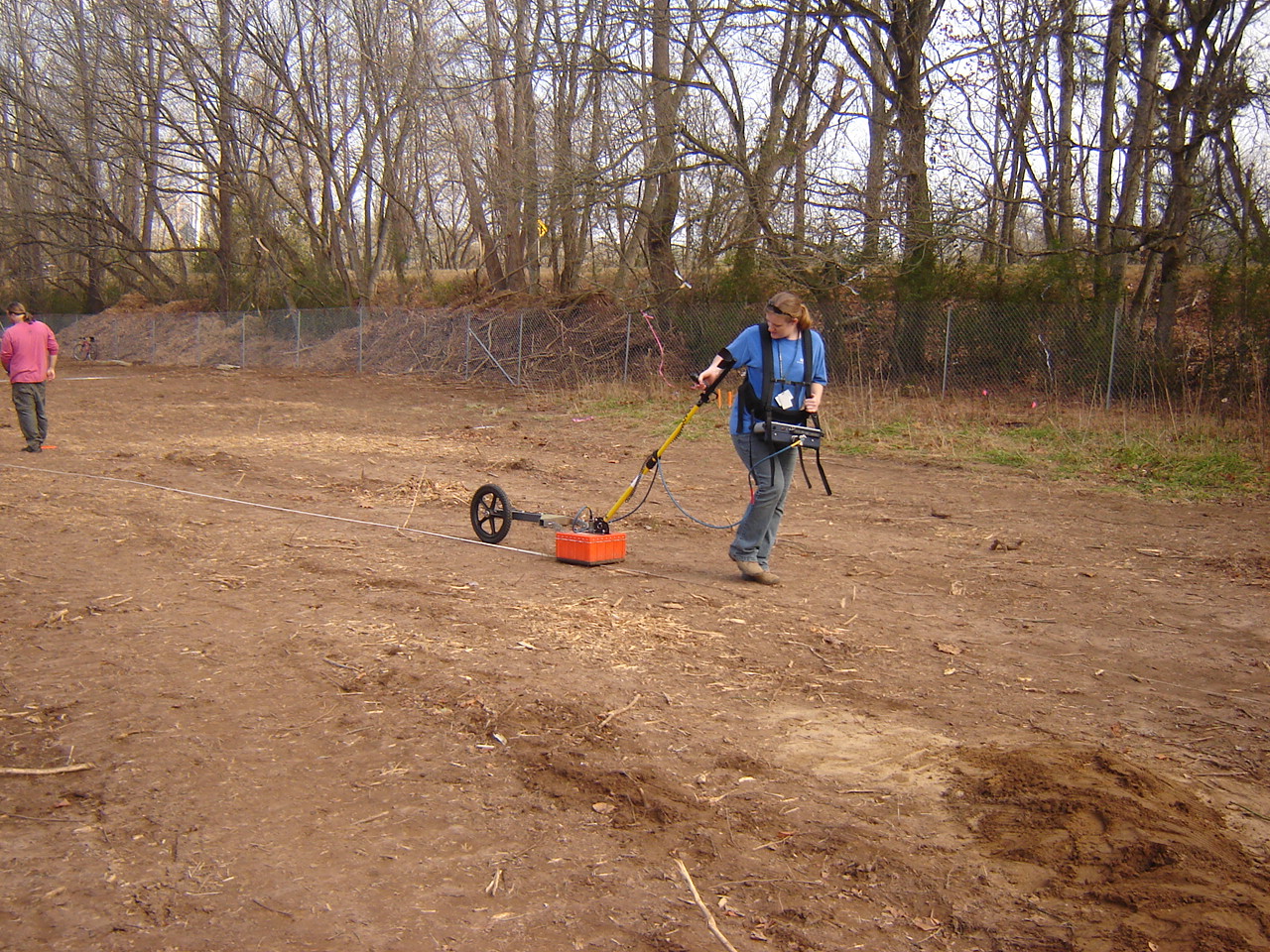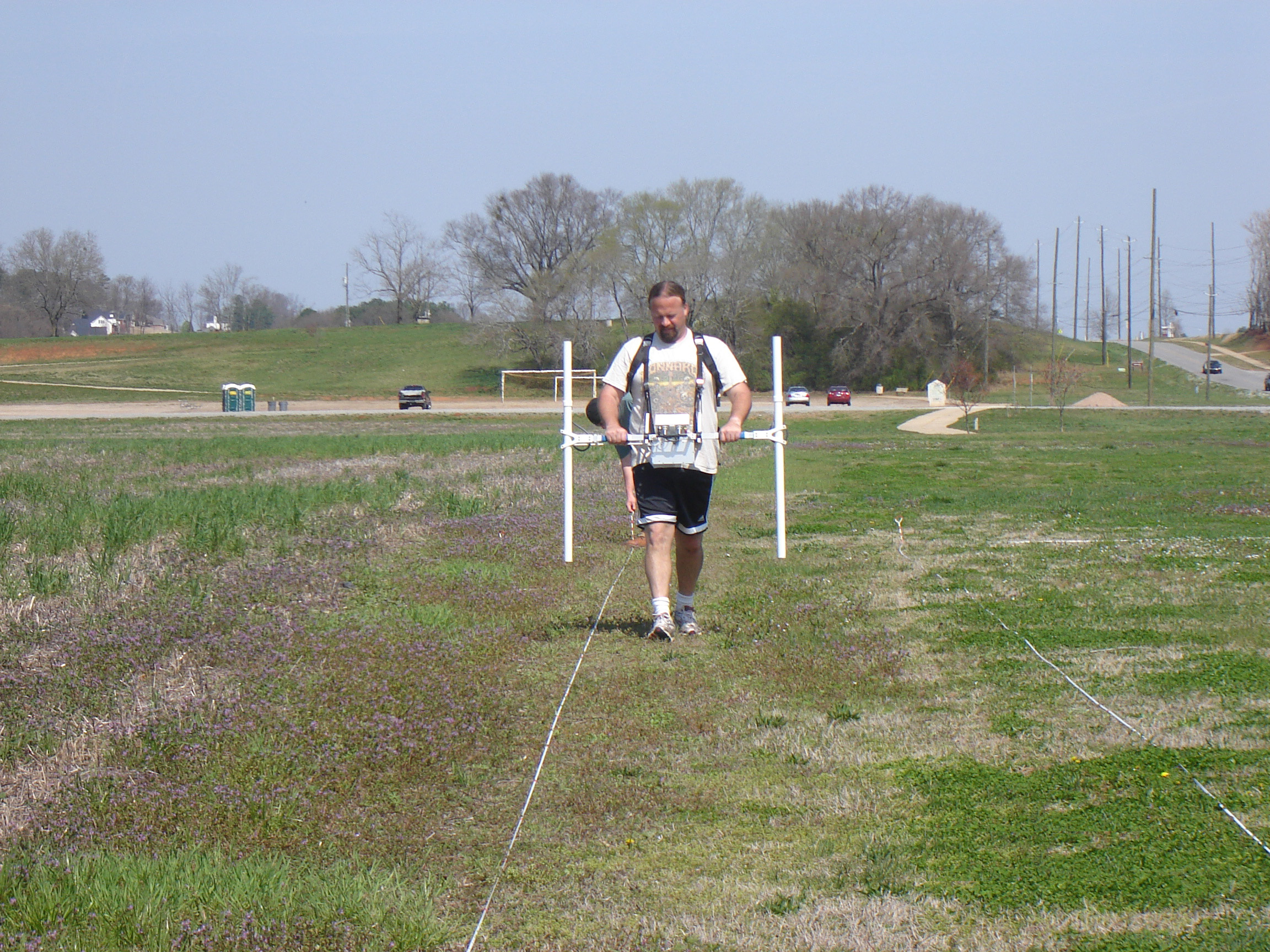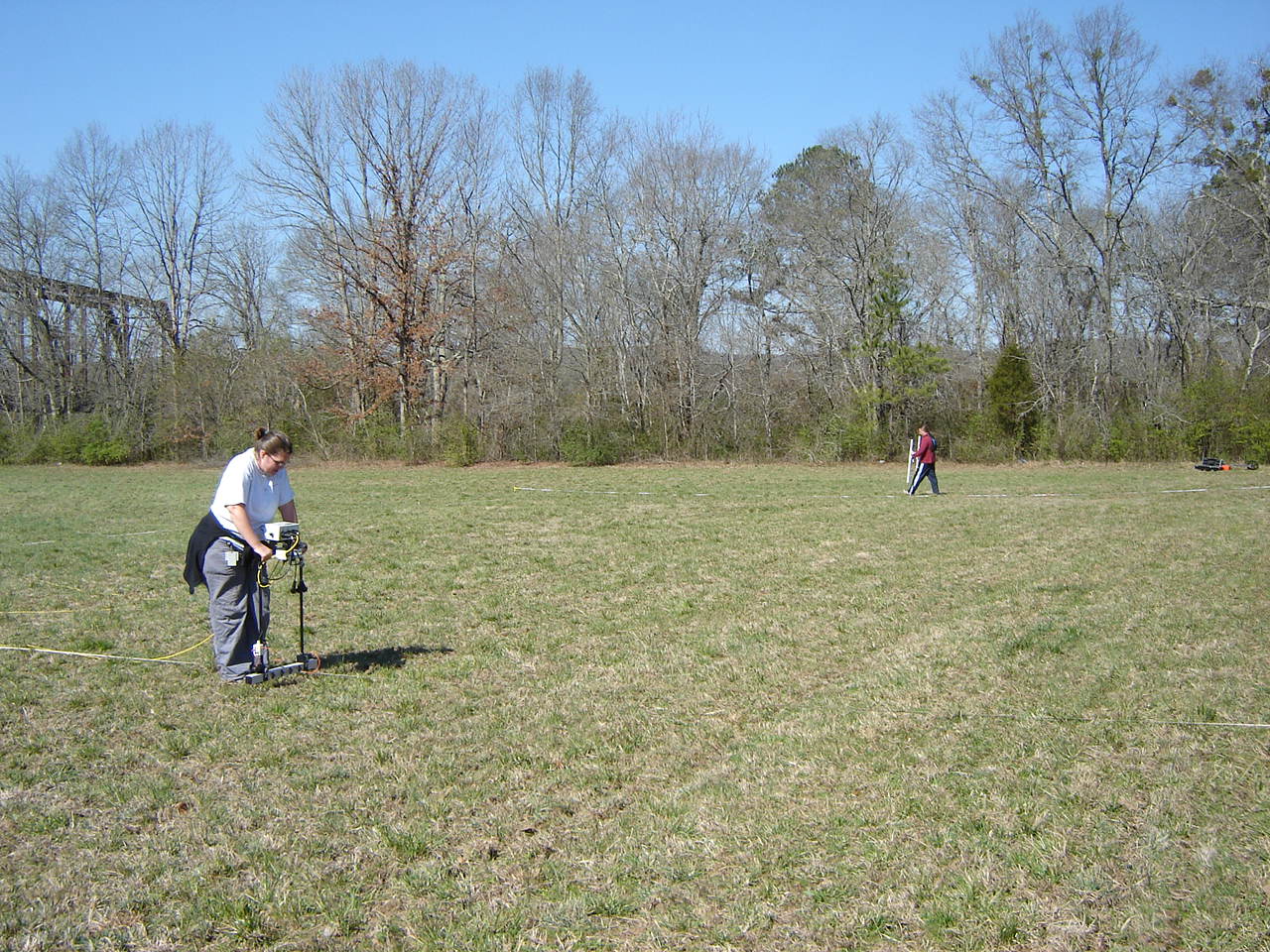Historic Periods
Paleoindian Period (12000-8000 B.C.)
The earliest evidence for human occupation in Georgia, as well as the entire Eastern
Woodlands, dates to what is called the Paleoindian period. This cultural stage coincides
with the terminal Pleistocene and the end of the last major glacial advance.
Environmentally, the Southeast was probably dominated by coniferous forests similar
to boreal forests now present in northern and western North America. These conditions
remained in effect until the end of the last glacial period when forests more similar
to those present today began to appear.
Another notable feature of this period was the presence of large mammalian species,
sometimes called “megafauna” and including such species as mammoth and bison. It
is postulated that Paleoindians lived a nomadic existence; small band-level groups
wandered the forests in pursuit of large game herds and smaller game such as white-tailed
deer. Thus, researchers in the Southeastern United States suggest that high mobility,
low population density, and hunting characterized Paleoindian occupations in the
region.
In Georgia, Paleoindian sites have been found on levees, terraces, upland boundaries,
and in the uplands; these sites are typically small, low density camp sites, but
some sites were intensively occupied for longer periods and/or were repeatedly occupied
by visiting groups.
Archaeologically, the Paleoindian lifeway is represented by a distinctive assemblage
of lanceolate-shaped and often fluted projectile points. Also, lithic tool kits
of thumbnail scrapers, expedient flake tools such as knives and gravers, and other
formal bifaces are representative of Paleoindian sites. Clovis and similar types
(Quad, Suwanee, Redstone, Meserve) are thought to be the earliest types; smaller
lanceolate to side notched varieties (e.g., Dalton, Hardaway) appear later in time.
Archaic Period (8000-1000 B.C.)
The Archaic period reflects dramatic changes and expansion in settlement and subsistence
patterns from the previous Paleoindian cultural period as well as the beginning
of the development of subregional traditions. The Archaic period can be divided
into three subperiods: Early, Middle, and Late.
The Early Archaic toolkit featured a series of notched points (Big Sandy, Palmer,
Kirk, Bolen) and a wide variety of cutting, scraping, and chopping implements, demonstrating
a heavier reliance on the hunting and processing of smaller terrestrial animals.
The onset of the Middle Archaic was highlighted by warmer and moister environmental
conditions which led to further human adaptations. Stemmed points (Stanley, Morrow
Mountain, Guilford) replaced notched varieties and were particularly adapted for
use with spears. Cultural behaviors of populations in the Piedmont region of Georgia
began to diverge from those in the Coastal Plain.
The Late Archaic period has been described as a time of population growth, increased
sedentism, technological innovation, and expansion of subsistence strategies. Sites
were typically larger and better organized occupational spheres. Plant gathering
and the consumption of shellfish were added to the Archaic population’s dietary
strategies; Coastal Plain groups began exploiting heavily the resources of riverine
environments. The Late Archaic toolkit included broad Savannah River stemmed points
and the region’s first pottery, made with a fiber temper. Coastal Plain sites exhibit
plain and decorated varieties of this pottery, while groups in the Piedmont delayed
the introduction of this technology, instead seemingly preferring to use soapstone
vessels in cooking on sites.
Woodland Period (1000 B.C. – 1000 A.D.)
The Woodland period in Georgia and the Southeastern United States is usually characterized
by modern climatic conditions and forest species, extensive use of pottery, increased
reliance on the exploitation of wild plants and later horticulture, the development
of ceremonial activity, and the establishment of permanently occupied sites. Like
the Archaic period before it, the Woodland period is subdivided into Early, Middle,
and Late subperiods as well as phases, based primarily on pottery types.
The Early Woodland introduced changes in pottery temper, from fiber to sand,
and decorations such as simple stamping and fabric marking began to appear. Smaller
stemmed bifaces were used, along with smaller lithic, shell, bone, and antler tools,
signaling the introduction of new technologies such as the bow and arrow. Intensive
plant gathering and hunting dependence, from seasonal or more permanent base camp
sites, became common during the middle part of the Woodland period. Large populations
could be supported by developments in food preservation and storage.
Middle Woodland pottery included a variety of designs such as check stamped, cord
marked, simple stamped, complicated stamped, and plain. At this time, the Piedmont
and Coastal Plain regions seem to have become more integrated, this conclusion based
in part on the similarities of pottery designs. The first burial mounds were also
constructed in north Georgia during this subperiod; rock mounds and other structures
are also sometimes attributed to the Woodland period.
The Late Woodland subperiod is often thought of as a transitional time between the
Woodland and the later Mississippian period. This is the time period when maize
horticulture is thought to have been fully developed, an advance which may have
had a direct effect on subsistence/settlement strategies. Pottery types included
those with cord marking (Wilmington) and complicated stamping (Swift Creek, Napier).
Mississippian Period (1000 – 1540 A.D.)-
Temple mound construction, ceremonialism, increased political sophistication, elaborate
artifact assemblages, and a dramatic rise in the production of maize and other agricultural
practices are noted characteristics of the Mississippian period.
Large, sedentary population centers developed in major river valleys during the
Mississippian period. Towns including mounds and defensive structures were built
and became the centers of societies known as chiefdoms. Some of these sites are
evident today at Etowah, Ocmulgee, and Nacoochee.
The Mississippian period has been divided by researchers into Early, Middle, and
Late subperiods, based on pottery expressions such as type and vessel form. Diagnostic
pottery designs included complicated stamped, check stamped, incised, and burnished
varieties (Woodstock, Savannah, Etowah, Lamar), and tempering agents were often
mixed and varied, with combinations of sand, grit, quartz, and shell used in different
regions. The Late Mississippian Lamar subperiod ended with the entrance of European
explorers such as de Soto and de Luna into the area of the Southeastern United States.
Historic European Period (1540 A.D. to Present)
Historically, Georgia and the Southeastern United States have experienced periods
of exploration and settlement, with European groups coming into contact with native
populations. This contact led to dramatic change in the cultures and societies of
the native groups, and the landscape of the region was altered with the introduction
of new populations, new technologies, and new diseases. Remnants of chiefdoms coalesced
to form larger societies, including those of the Creek and Cherokee.
Georgia was a point of contention among European powers, especially the Spanish,
who had interests in Florida, and the English, but the Georgia colony was established
in 1732 by the English. By the mid-1700s the military threat from the Spanish had
been removed and Crown grants of land along the coast were awarded. With the new
land grants, and the legalization of slavery in Georgia in 1751, families began
to spread out across the countryside establishing farms and plantations. Land lotteries
opened Georgia land to development by settlers and conflicts between groups became
more frequent.
Georgia was still a relatively new colony at the time of the Revolutionary War,
and its small population, lack of development, and short period of experience kept
it on the periphery of the conflict. Small backcountry skirmishes occurred, and
the area of Savannah came under siege, but for the most part, many Georgia residents
maintained neutrality and some even loyalty to the Crown. Following the end of the
Revolutionary War, the economy of Georgia began to develop, mostly due to the invention
of the cotton gin and the expansion of the frontier.
While this series of events and trends was a boon to the European population, the
circumstances were tragic for the native population, with the Creeks, and later
the Cherokee, forced into removal from the state. The construction of railroads
connecting Athens, Augusta, Macon, and Savannah was an important development of
the interior of the state in the 1830s. By 1860, Georgia was becoming industrialized
and was taking on an even larger population.
As opposed to its limited role in the Revolutionary War, Georgia played a vital
part in the secession crisis, the founding of the Confederacy, and the ensuing Civil
War. Georgia seceded from the Union on January 19, 1861. While many battles were
fought on state soil, William T. Sherman’s “March to the Sea” in 1864 had the greatest
effect, devastating Georgia and southern morale in general. The postwar years were
a time of Reconstruction, marred by political upheaval, federal and northern occupation,
and racial tensions.
On the heels of this uncertain time came Henry W. Grady and his concept of the “New
South,” in which Atlanta would become the capital of a dynamic and progressive empire
state. Despite Grady’s vision, much of the state remained agricultural in focus,
and the loss of slave labor for farming led to widespread adoption of numerous varieties
of tenancy, sharecropping, and crop lien systems. The social relations of blacks
and whites were complex and conflicted during the early part of the twentieth century,
with political and legal battles absorbing the majority of energy of the state.
The introduction of the boll weevil in 1915 led to a precipitous drop in cotton
production and to the migration of workers away from the agricultural way of life.
Government programs such as the WPA and the CCC put many of these people to work
in the 1930s; these programs also left a structural legacy on the Georgia landscape.
Georgia also attracted textile mills at this time, with its abundant population
of cheap labor. During the ensuing World War, workers in the state contributed to
factory productions and soldiers did their training at Fort Benning in Columbus.
In the mid-twentieth century, transportation became an important feature of Georgia,
especially Atlanta with its Hartsfield Airport, and set the stage for the state’s
industrialization and economic prosperity. As Georgia and Atlanta became a hotbed
in the Civil Rights movement, it also became the heart of the Sunbelt, an area characterized
by warm temperatures and economic and demographic developments in the later decades
of the twentieth century. Industries such as carpet and poultry arrived in Georgia,
but the farming of traditional crops, peaches, peanuts, cotton, etc. did continue
if in more limited expression. Today Georgia is experiencing a new growth, but it
is still a state that is a product of its historical development. It is important
to consider both the narrative of this history and its material signature when considering
cultural resources, given that this is the context within which all sites will be
evaluated.


